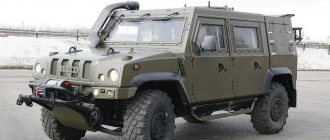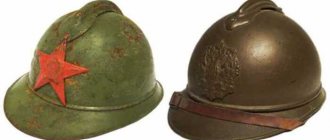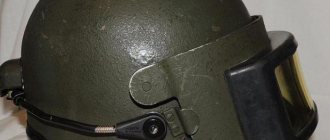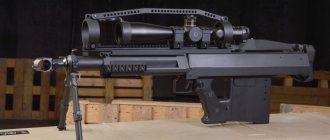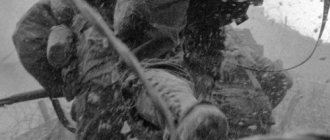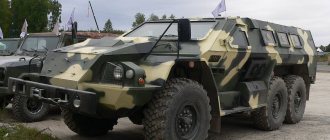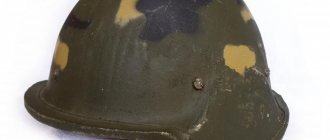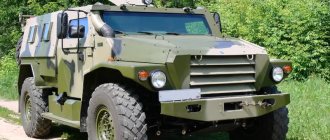Protective helmets were remembered during the First World War of 1914-1918. The fact is that it was a trench war, and the main target for defeat in it was precisely the soldiers’ heads, which regularly appeared above the trench parapet. They were hit with machine guns, covered with shrapnel, and jammed with landmines. It goes without saying that personnel losses from hits to the head have increased monstrously. That's when the generals sounded the alarm.
The French were the first to develop their helmet. It was named "Adriana" and put into production at the beginning of 1915. The French helmet was assembled from three parts: a cap, a skirt and a crest. The use of a protective helmet significantly reduced French losses. The number of killed decreased by approximately 12–13%, and the number of wounded by almost 30%. Such a remarkable result could not go unnoticed by other participants in the conflict. The “Adrian” helmet was immediately purchased by allied countries: Great Britain, Russia, Romania, Italy, Portugal, etc.
However, the British military leadership was not satisfied with the quality of the Adriana's protection, and therefore it was decided to create its own English helmet. The choice of the military fell on the development of John Leopold Brody. In his model, Brodie took as a basis the medieval iron hat of Capellin, in which the British fought during the 11th–16th centuries. The helmet received the simple name “Helmet Steel Mk1”, which translated means “Steel helmet of the first modification”. It was one-piece stamped and had wide brims. In such a helmet it was good to sit out in a trench, feeling as if you were covered from above with an umbrella, but it was damn uncomfortable to go on the attack, because the Mk1 sat very high on the head, which is why it did not protect the temples, ears and back of the head at all. Nevertheless, the English “plate” was immediately adopted by the USA, Canada and Australia.
Unlike its opponents, Germany for a long time could not decide on the model of its helmet, and German soldiers remained without protection until 1916. Most likely, solid Germany, which cannot stand hackwork, simply did not want to spend money on the production of second-rate samples; it was waiting for the gunsmiths to design something truly worthwhile. And it happened. At the beginning of 1916, the famous M16 "Stahihelm" was developed in Hanover. Subsequently, this helmet became a symbol of the German soldier in both the First and Second World Wars. Its convenience and excellent protective qualities were significantly superior to the helmets of opponents from the Entente countries.
One of the main features of the “Stahihelm” was the small “horns” located in the temporal areas of the helmet. This was by no means a design refinement or a tribute to the horned Teutonic knights. The “horns” covered the ventilation holes and at the same time were part of the fastening of the additional armor shield, which was hung on the front of the M16. It was this shield that was supposed to help the helmet withstand a direct hit from a rifle or machine gun bullet. The idea seemed wonderful, if not for one small “but”: the armor could withstand it, the human neck could not. In other words, the impact energy was so high that the soldier received serious injury to the cervical vertebrae, which in most cases led to his death. Other developers of protective helmets faced the same problem, trying to catch bullets flying peacefully nearby with their foreheads.
If we talk about Soviet Russia (and later the USSR), then at first its Red Army used the “Adrian” helmets inherited from the tsarist army, as well as their Russian modifications M17 “Sohlberg” (M17 were produced in Finnish, hence the name). They remained in service until the late 1930s. True, it should be noted that the Red Army had very few of these rarities, and they were used mainly in parades, and after the creation of the SSh-36 steel helmet in 1936, they were transferred to the fire department, where they served right up to the 1950s .
SSh-36 was the first mass-produced Soviet helmet. He went through a number of wars and conflicts, including: the Spanish Civil War, the battles on Lake Khasan, Khalkhin Gol, the Polish Campaign, the Winter War with Finland. The SSh-36 was created in the likeness of the German M16 “Stahihelm”, but the results of combat use showed that it was in many ways inferior to its prototype. The helmet was bulky, heavy (up to 1.3 kg) and at the same time easily penetrated (wall thickness only 1.1 mm). The large visor obstructed the view. In addition to the above-mentioned disadvantages, the SSh-36 had a wide brim and, in strong winds or vehicle traffic, was blown off the soldier’s head. That is why the command of the Red Army decided to create a new helmet. So in 1938–39. The famous SSH-39 was born, which will forever remain part of the image of the Soviet soldier who broke the back of German fascism.
The new Soviet helmet, unlike the SSh-36, was made of much more durable alloy armor steel. Its weight was 1.25 kg, the wall thickness was 1.9 mm. The SSh-39 withstood being hit from 10 meters by a bullet from a Nagan revolver (the test was personally carried out by the legendary Marshal Semyon Mikhailovich Budyonny) and small fragments.
In 1940, the SSh-39 received a new sub-helmet device (a system of belts, nets and linings that holds the helmet on the head and absorbs impacts), and from that moment on it became known as the SSh-40. The steel helmet SSh-40 has not yet been officially removed from service with the Russian army; thousands of units of this protection are still collecting dust in military warehouses for long-term storage.
The under-body device in the post-war Soviet helmet was changed two more times, resulting in the SSh-54 and SSh-60 models, respectively, of the 1954 and 1960 models. In both the first and second developments, the same steel dome, constructed back in 1939, continued to be used.
They decided to change the legendary SSh-39 only in 1968. It was then that a more durable armor alloy was used for the new helmet, the slope of the frontal wall of the dome was increased (which theoretically increased the resistance of the helmet when hit by fragments), and the sides bent outward were shortened. SSh-68 is still the main protective helmet of the Armed Forces of Russia, CIS countries, China, North Korea, Vietnam, India, etc.
Of course, the 1968 model helmet does not fully comply with modern requirements for the protection of servicemen, but the product has already been manufactured, all army warehouses are filled with it, which means the only way out is to modernize it. This is exactly how the models SSh-68M (developed for the Internal Troops of the Ministry of Internal Affairs) and SSh-68N “Blank” (developed for the Armed Forces of the Russian Federation) appeared. Both helmets are internally reinforced with ballistic aramid fabric and have modern under-the-face devices installed. Although the weight of the helmets has increased to almost 2 kg, their strength has increased significantly. Now the head protection has become consistent with resistance class 1, which means it is able to withstand direct hits from PM pistol bullets and steel fragments weighing about 1 gram (the so-called V50 standard) flying at a speed of 400 m/s.
At the moment, the production of steel general-arms helmets (including the SSh-68) has practically ceased. They have been replaced by models made using fabric-polymer technology, which are much lighter, more convenient, and most importantly, better protect against shrapnel - the main damaging factor of modern warfare. (According to statistics, 70-80% of all wounds received by personnel are from shrapnel and only the remaining 20-30% from bullets). It is precisely these helmets that are now being supplied en masse to equip all armies of the world, including the Russian one.
The first Russian serial general-arms helmet made using fabric-polymer technology was 6B7. The helmet was developed and until recently produced by the Research Institute of Steel as part of the Borit and Borit-M R&D programs. The 6B7-1M modification continues to be produced by the Armocom Center for High-Strength Materials. The 6B7 helmet was accepted for supply to the Russian Army in 2000 and became a replacement for the steel SSh-68. First of all, these helmets were supplied to high combat readiness units - the Airborne Forces, Marine Corps, etc.
Helmet 6B7-1M : Weight - 1.2 kg V50 - 630 m/s Protection area - 11.5 sq.dm. Bullet resistance: PM from 5 m, TT from 50 m (1st class of protection) Material: organocomposite based on Rusar fibers
In 2006, without discontinuing production of the 6B7, the Scientific Research Institute of Steel created a new, one might say revolutionary, protective helmet, the 6B27 (modifications: 6B26 and 6B28), which is superior in its characteristics to the vast majority of foreign models. Possessing almost the same mass as the 6B7, the new helmet has noticeably added resistance to fragments. At the moment, both of these helmets are purchased by the Russian Army in almost equal quantities.
Helmet 6B27, assault : Weight - 1.25 kg V50 - 700 m/s Bullet resistance: PM from 5 m, TT from 40 m (1st protection class)
Helmet 6B26, general-arms : Weight - 0.9 kg V50 - 600 m/s Bullet resistance: PM from 5 m (1st protection class)
Helmet 6B28, airborne : Weight - 1 kg V50 - 600 m/s Bullet resistance: PM from 5 m (1st protection class)
The unique protective qualities of the 6B27 helmet (6B26 and 6B28) are determined by the original production technology developed by specialists from the Research Institute of Steel. The most common method of producing fabric-polymer helmets is where layers of Kevlar (or other ballistic fabric) are impregnated with a resin (such as epoxy) and then glued together under a hot press. This method is simple, fast and technologically advanced, but has serious drawbacks. Impregnation of Kevlar significantly reduces its protective properties. For the production of 6B27, a different technology is used: polyethylene-based binder films are laid between layers of protective fabric. The helmet consists of 34 layers (see photo), laid in the following order: rusar - 5 layers, canvas 8601–90 - 16 layers, rusar - 10 layers, armos - 3 layers. When heated, this entire “pie” is sintered into a single whole. The only disadvantage of such production is that the price of the product has increased almost one and a half times.
It should also be noted that the Research Institute of Steel is currently working on the creation of a new Ratnik-BSh helmet.
After I introduced you to the evolution of the army helmet, I would like to dwell on small-scale models created to protect soldiers of various special forces. Both in Russia and abroad, a great many such helmets have been created, so we can talk about them for a very long time. Limited to the scope of a short article, I want to provide only basic data on the most famous domestic developments.
Helmet "Altyn"
Operation: 1984 - present Production: discontinued Case: titanium 4 mm, later models - titanium 3 mm with aramid support Construction: one-piece dome, without seams, radio headset Weight: 3.5 - 4 kg Protection class: dome - 2nd visor - 1st Use: FSB, formerly KGB of the USSR Note: “Altyn” is a legendary Russian (Soviet) helmet. Its canopy and visor were manufactured at the Steel Research Institute; assembly was carried out only by specialists from the KGB of the USSR. “Altyn” was part of the equipment of groups “A”, “B” and “C”. Used during special operations in Afghanistan and Chechnya.
An almost exact copy of the Altyn is the K6-3 protective helmet, which the Steel Research Institute produced from the early 1990s until 2014. By changing the name of the helmet, the manufacturer got rid of the control of the KGB (FSB) and thereby gained the opportunity to carry out the final assembly of helmets, and then sell them to other law enforcement agencies and security organizations. The differences between the K6-3 and the Altyn are very small: - the absence of a radio headset - the visor mount is reinforced and made in the form of a titanium casing (like the Lynx) - the visor stops are riveted and not secured with screws.
Photo: Armored helmet “Lynx-A” / “Lynx-T”
In this short article I would like to highlight several samples of devices for protecting the most important organ for special forces - the head.
Looking ahead, I would like to note that in the photographs you can see the helmets: ALTYN, MASK-1, K6-3, LYNX-T.
Since the customer, and indeed the manufacturer (in fact), of this helmet was the KGB of the USSR, this helmet was used exclusively in special units of the KGB of the USSR. It is known that the helmet was part of the equipment of the fighters of group “A”, group “B”, group “C” of the KGB of the USSR and even visited Afghanistan. The Altyn helmet served for quite a long time, and managed to take part in more than one notorious event. With the start of production of new generation helmets, such as, for example, Lynx-T, Altyn has already lost its position, but still remains one of the most legendary pieces of equipment for special forces soldiers. All these years, the helmet production scheme was unchanged: the titanium shell and armored visor were supplied to the KGB/FSB specialists by the Steel Research Institute, and the assembly was carried out directly by special services specialists.
Helmet "Mask-1"
Operation: 1991 - present Production: discontinued Body: armored steel Visor: 1. one-piece made of transparent polycarbonate 2. steel with a hexagonal polycarbonate visor Design: one-piece canopy Weight: 2.6 kg - without visor 3.6 kg - with one-piece visor polycarbonate 4, 12 kg - with a steel visor with a polycarbonate visor Protection class: dome - 2nd visor - 1st Protection area: 13 sq. dm in class 2 Modifications: 1. “Mask-1Shch” - visor with a slot, without glass 2. “Mask-1R” - equipped with a radio headset Use: Ministry of Internal Affairs, FSB, Ministry of Defense of the Russian Federation Note: The “Mask-1” helmet received the widest spreading.
Helmet STSH-81 “Sphere”
Operation: 1981 - present Production: discontinued, only SSSH-94 “Sfera-S” is produced Case: titanium 3 mm Design: the dome is formed by three separate armor elements placed in the pockets of a special cover. No visor provided. Weight: 2.3 kg Protection class: 2nd Protection area: 10 sq. dm in class 2 Modifications: 1. SSSH-94 “Sfera-S” - titanium armor elements replaced with steel ones. Weight increased to 3.5 kg 2. "Sfera-P" - titanium armor elements were replaced with thin steel ones (0.7 mm). Weight decreased to 1.6 kg. Does not protect against firearms, only against mechanical shocks. Use: Ministry of Internal Affairs, Internal Troops. Note: The Sphere's lack of a complete canopy often leads to serious traumatic brain injuries, even if the helmet remains intact. Rapid wear of the special cover contributes to the displacement of armor elements, and, consequently, a decrease in the quality of protection.
Modern
In this article we will look at modern armored helmets
, the history of their creation and specific application. Despite the fact that armored helmets were used both in the Middle Ages and during the world wars, the history of modern assault armored helmets can be dated back to the second half of the 20th century.
In the mid-70s of the 20th century, the “Tig” PSH-77
. The helmet was produced with an adjustable balaclava and a movable radio headset. Has 2 protection class. Total weight 4 kg, without visor 2.7 kg. Moreover, this armored helmet had 2 visor options: polycarbonate bulletproof and titanium with a wide slot in the middle, closed with polycarbonate. This helmet was widely used in European special forces, in particular it was supplied to the German GSG-9 from 1978 to 1999.
It is also necessary to say that in the second half of the 20th century, only two European companies produced titanium assault armored helmets. In Austria it is Ulbricht, and in Switzerland TIG. An interesting feature of the Austrian helmet Ulbrichts AM95
, is its shape and the presence of special grooves with active headphones.
Altyn was created based on the TIG.
.
The first helmets had a titanium thickness of 4 mm and did not have an aramid liner. In the early nineties, the helmet received an aramid liner, and the thickness of the helmet was reduced to 3 mm. The Altyn helmet was equipped with a radio headset, connected via a connecting cord to a wearable radio station placed either on the unloading vest or on the fighter’s belt. Altyn became the first Soviet helmet to have face protection using a visor made of titanium and bullet-resistant polymer glass. The armored helmet has protection class 2 and protects against bullets with a steel core from PSM 5.45 caliber pistols at speeds up to 335 m/s and from 7.62 caliber TT pistols at speeds up to 445 m/s. The weight of the helmet is from 3 and a half to 4 kg. Externally, the Altyn can be distinguished from the TIG helmet only by a different visor shape and a slightly larger dome with characteristic edges. This helmet was used by special forces for a long time
, as it had good characteristics and high reliability. Used during military conflicts in Afghanistan and Chechnya. Today Altyn is not produced.
In 1981, a special titanium helmet SSSH-81 was developed with the designation “Sphere”
, having a distinctive design. Thus, the dome of the helmet is formed by three separate titanium armor elements 3 mm thick, placed in the pockets of a special cover. The helmet does not have a visor. The helmet protected the head over the entire area, with the exception of the face area, according to the second class of protection, from bullets fired from PM, APS, TT and PSM pistols, as well as from any fragments. Soon the SSH-81 "Sphere" helmet was modernized and the SSSH-94 "SPHERE-S" helmet appeared. The letter “C” in the name meant that the armor elements in the helmet were made not of titanium, but of special armored steel. Externally, the helmets are absolutely indistinguishable. The advantage of steel armor was that it became less brittle than titanium armor elements STS-81, and the toughness of steel was higher than that of titanium. Despite the fact that the helmet is now out of production, it continues to be used in certain special units.
In the second half of the 80s of the 20th century, a new helmet was developed as an alternative replacement for the Sphere helmet, which did not have the ability to install an armored visor. And in 1991, based on the Altyn helmet, the Mask 1
. Unlike its predecessor, the body of Mask 1 is made not of titanium, but of monolithic armor steel. The protection class of the dome is 2, the visor with a polycarbonate insert is 1 protection class. The weight of the dome is 2.6 kg, the visor is 1 kg. The internal equipment of the helmet is designed to absorb the dynamic impact of bullets and shrapnel on the head during shelling. Production of the helmet has now been discontinued.
Helmet ZSh-1
Operation: mid-1990s - present Production: produced by NPP KLASS Body: composite, aramid Visor: one-piece made of transparent polycarbonate Construction: one-piece dome Weight: 1.3/1.5 kg - without visor (values are given for 2 sizes ) 1.6/1.8 kg - with visor (values are given for 2 sizes) Protection class: dome - 1st visor - shockproof Protection area: 13.8/14.5 sq. dm (values are given for 2 sizes) Modifications: radio-equipped model Use: Ministry of Internal Affairs, Internal Troops Note: the ZSh-1 helmet is available in three colors: black, green, camouflage. To equip units of the Internal Troops, the ZSh-1 without a visor is most often used.
Helmet ZSh-1-2
Operation: 2007 - present Production: produced by NPP KLASS Housing: armored aluminum with aramid support Visor: armored glass on steel fastenings Construction: one-piece dome Weight: 3.5/3.8 kg (values are given for 2 sizes) Protection class: dome ― 2nd visor ― 1st Protection area: 13.6/15.0 sq. dm (values are given for 2 sizes) light-transmitting part of the visor - 3.5 sq. dm Modifications: radio-enabled model Use: Ministry of Internal Affairs, Internal Troops Note: The ZSh-1-2 helmet was created to replace the “Mask-1”. Both of these helmets are products of NPP KLASS, which in their latest development has completely retained the shape of the earlier model. However, due to the use of new materials, the ZSh-1-2 helmet has a much greater margin of safety.
Armored helmets for special forces
General-arms steel helmets SSh-68, even reinforced with aramid ballistic fabric, can no longer meet modern requirements.
Special units of the Armed Forces, the Ministry of Internal Affairs and the FSB are armed with new, more advanced models. Armor steel was replaced by titanium, armored aluminum and fabric-polymer compositions. Over the past 30 years, special helmets have been produced in small series for special units, many of which are still in service.
HELMET STSH-81 “SPHERE”
By order of the USSR Ministry of Internal Affairs, a special titanium helmet “Sfera” (STSh-81) was developed in 1981 by the Research Institute of Special Equipment, and its production began in 1985. The “Sphere” helmet consists of three profiled titanium parts 3 mm thick, which are inserted into the pockets of the fabric cover. The helmet is secured to the head using a belt with a cup attached to the chin. The helmet protects the head over the entire area (except for the face area) according to the second class of protection, that is, from almost any fragments, as well as from bullets fired from a pistol. In 1994, a steel modification of this helmet, SSSH-94, or “Sphere-S,” was released. However, having similar protective properties, this helmet is significantly heavier than STS-81. A lightweight version of the “Sphere” was also developed - the protective helmet “Sfera-P” (“P” - shockproof), designed to protect against impacts from stones and fragments of small mass and flying at low speeds. The weight of the Sfera-P helmet is only 1.6 kg. The armor elements were made of steel 30 KhGSA with a thickness of 0.7 mm. A significant drawback of the Sfera helmets is the inability to install a bulletproof visor. All helmets of the “Sphere” series are used primarily in units of the Ministry of Internal Affairs.
"ALTYN" - KGB LEGEND
In 1982, the Research Institute of Steel, commissioned by the KGB of the USSR, began the development of a titanium helmet with an armored visor. In 1984, the Altyn helmet went into production. The helmet was developed based on the prototype of the Swiss TIG, but significantly surpassed it in protective properties. Initially, the thickness of the titanium dome walls was 4 mm, but in the 1990s the helmet received an aramid support and thinner (3 mm) titanium shell walls. In addition to the armored visor, the helmet was equipped with a radio headset.
"Altyn" was used exclusively in special units of the KGB of the USSR and still remains one of the most legendary pieces of equipment for special units soldiers.
“VITYAZ-S” – HELMET “NUMBER ONE”
The Vityaz-S bulletproof helmet was manufactured at the Steel Research Institute. Development of the helmet began in the late 1980s. The helmet had the second class of protection both on the helmet and on the visor. It was made entirely of armored steel and weighed as much as 4.5 kg. The Vityaz-S helmet is used by the fighters who are the first to attack - the “first numbers”.
The helmet was produced both with and without a visor. The helmet did not have a liner, which increased the likelihood of armor injury when a bullet hit the helmet.
MASK TYPE HELMETS
In order to replace the “Sphere” armored helmet in the special forces of the Internal Troops and the Ministry of Internal Affairs, to which it was impossible to mount face protection, NPP “Klass” developed and launched the production of the “Mask-1” protective helmet. The helmet was adopted for service in 1991.
The helmet consists of a steel dome and a bullet-resistant polycarbonate visor, which provides protection to the front, frontal, parietal, occipital and temporal parts of the head. The underbody part includes polyurethane foam dampers, a restraint system, belts and a tension regulator. It absorbs the dynamic impact of bullets and shrapnel on the head.
The helmet had two modifications: “Mask-1 R”, equipped with a radio headset, and “Mask-1 Shch”, which received a steel visor with a viewing slot and a full second class of face protection.
The Mask-1 helmet has been discontinued, but continues to be used by special units of the Ministry of Internal Affairs and the Ministry of Defense.
A further development of this model were the “Mask-2”, “-3” and “-4” helmets, made from synthetic materials and weighing significantly less, but having a lower protection class.
HELMET ZSH-1-2
To replace the steel helmet "Mask-1", NPP "Klass" in 2007 released the ZSh-1-2 helmet, which in turn was a development of the ZSh-1 helmet. The helmet body is one-piece, made of armored aluminum with aramid support. The visor is armored glass with steel fastenings. Unlike ZSh-1, which provides the first class of protection for the canopy, ZSh-1-2 provides the second class for the canopy and the first class for the visor. The helmet has the shape of an earlier model, but due to the use of new materials ZSh-1-2 has a much greater margin of safety.
HELMET "LYNX"
The Altyn helmet has also received its development. In 2007, the Steel Research Institute began production of the “Lynx” helmet: “Lynx-T” made of titanium and “Lynx-A” made of aluminum. It is assumed that titanium helmets should be used when performing combat missions, aluminum ones - for police officers. The Lynx helmet is radio-equipped and has a second class of protection. The visor is removable. The inside of the helmet is reinforced with aramid fabric to contain bullets or fragments and absorb impact energy. "Lynx-T" provides a level of protection of the 2nd class.
Helmet "Vityaz-S"
Operation: late 1980s - present Production: discontinued Housing: armored steel Visor: armored steel, visor - polycarbonate and armored glass package Design: one-piece dome, without seams. Weight: 4.5 kg Protection class: canopy - 2nd visor - 2nd Modifications: "Vityaz-S" without visor, while weight - 3.2 kg Use: Ministry of Internal Affairs, FSB (KGB of the USSR) Note: Helmet " Vityaz-S" was produced in very limited quantities. This is one of the few helmets that provides class 2 visor protection. Thanks to this quality, the Vityaz-S helmet is still chosen by the “first numbers”, in other words, by the fighters going on the assault in front. Used in Chechnya.
Not made in Switzerland
In the early 1980s, the external and internal situation of the USSR became sharply complicated. Against the backdrop of the entry of Soviet troops into Afghanistan, the country's leadership feared that the Moscow Olympics could be overshadowed by a terrorist attack similar to the Munich events of 1972. At the same time, labor unrest began in Poland, a key country in the Soviet bloc. It is not surprising that it was in 1980 that the Research Institute of Steel received an order to develop a new helmet for special operations.
The Altyn helmet was created “in the image and likeness” of the Swiss armored helmet Tig PSH-77, a batch of which was purchased for the KGB of the USSR in the late 1970s. The Western novelty performed well in Kabul, when Soviet special forces stormed Amin’s palace. However, even Andropov’s department could not afford to spend scarce currency on the constant purchase of helmets. Therefore, domestic engineers were given the task of making a helmet of protection class 2 no worse than the Swiss one, only cheaper.
Hence, perhaps the name - “altyn” in Rus' was the name for a 3-kopeck coin. To facilitate the work of the Steel Research Institute, the KGB “shared” with it the technology for manufacturing a titanium helmet from the Austrian company Ulbrichts, which had fallen into the hands of Soviet agents.
In general, the Soviet replica, which took 4 whole years to create, repeated the main features of the European originals and even, as the creators assured, was superior to Tig in strength. The safety of the skull bones was ensured by a titanium shell 3 mm thick and a suspension made of aramid fabric. And the face was protected by a folding visor with a polycarbonate visor. KGB specialists, having received the dome from the Research Institute of Steel, supplemented the design with a radio headset for negotiations of the task force. The Altyn helmet reliably protected the head from pistol bullets and shrapnel, which was especially important in urban conditions. The protective agent was used, for example, in the Alpha and Vympel divisions. The helmet performed well in both Chechen wars and in many modern FSB operations.
Helmet "Lynx-T"
Operation: 2007 - present Production: produced by the Steel Research Institute Case: titanium (index "T" in the name), aramid support Visor: titanium with quartz armored glass Design: one-piece stamped dome, visor, radio headset Weight: 2.5 kg - without visor 3, 7 kg - with visor and radio headset Protection class: dome - 2nd visor - 1st (2nd class on special order) Protection area: 18 sq. dm with visor Modifications: “Lynx-A” - shell made of armored aluminum (index “A” in the name) and aramid support Use: Ministry of Internal Affairs, FSB Note: The “Lynx” helmet is a further development of the “Altyn” helmet. It is assumed that titanium helmets should be used in units performing combat missions, aluminum ones - by police. However, it is known from unofficial sources that the special forces of the Ministry of Internal Affairs “Lynx” were equipped with titanium helmets.
Oleg Shovkunenko
Other articles on personal armor protection:
- Assault Shield
- Armored cuirasses of the 20th century
- Army body armor
- Protection classes of body armor, helmets and other special equipment
Reviews and comments:
Vladislav 08/18/15 Good afternoon! In the photo with the caption “Shrapnel hit 6B7...” the Ukrainian helmet “Helmet 1M” produced by NPO TEMP-3000. Lightweight and durable UHMWPE dome - the color of the inside is revealed by polyethylene.
Oleg Shovkunenko Vladislav, I’m not sure that it’s “Helmet 1M” in the photo. As can be seen in the photo taken from the official page of Ukrspetsexport, the Helmet 1M has a rather pronounced visor, and the shape of the dome itself is more rounded. True, as you correctly noted, the “1M Helmet” is indicated by the presence of a thick inner layer of molded ballistic high molecular weight polyethylene. It is likely that over the years of production, the Ukrainian Research and Production Enterprise TEMP-3000 repeatedly changed the design of the “Helmet 1M” (this is indicated by many completely different photos of this helmet posted on the Internet), and this is where the confusion arose. I’ll probably remove the name of the helmet from the caption of the photo in my article.
Alex 09/28/15 Tell me, which military helmets provide class 3 head protection? I can't find an intelligible answer to this question. Maybe you know?
Oleg Shovkunenko Alex, to be honest, has not heard of serial class 3 helmets. There is information about an experimental steel helmet of class 3 BSh-1 developed by the Research Institute of Steel, as well as about an assault helmet of as many as class 5 BShK-5 (“Vulcan-5”), which was designed at the Armocom digital computer. But it seems to me that these are typical advertising tricks of manufacturing companies. Prototypes were made specifically for exhibitions. Like, look how cool we are! We are already making defenses that others do not even dare to think about. In reality, the existence of a class 3 helmet should mean that it protects against an AKM bullet from 10 m, and a class 5 helmet protects against an SVD bullet from the same distance. All this, to put it mildly, is unrealistic. Or rather, of course, you can create a helmet that won’t even take armor-piercing ammunition, but what kind of superman would wear it? Firstly, the helmet will be damn heavy (for example, the announced mass of Vulcan-5 is 4.5 kg). Can you imagine what it’s like to carry such a “cap” on your head, and how “comfortable” it is to turn your head in it? Secondly, a 7.62 mm bullet, even if it does not penetrate a bulletproof vest, will knock its owner off his feet, but what will happen if it hits such a class 3-5 super helmet? That's right, the fighter is guaranteed to have his neck broken. If you carefully read my article, you should remember similar experiments, which, alas, were carried out to no avail during the First World War. Yes, and one more thing... You may have heard about foreign helmets of the American IIIA (3A) standard. This standard corresponds to the Russian 2a, in other words, it provides protection against a 12-gauge hunting rifle, but not against Kalashnikov assault rifle bullets.
Andrey-barmaley 11.11.15 Very interesting information on helmets, collected in one place. I apologize, I’m still more interested in modern models, and in this regard, the question is: which of the helmets produced in the USSR/RF can be worn with glasses for vision correction? Do you have any experience of this kind? The fact is that pressing your ears strongly against the temples of your glasses causes a painful sensation, not immediately, but definitely.
Oleg Shovkunenko Andrey, I have often seen soldiers and officers with poor eyesight who had to wear glasses under the Soviet SSh-68 helmets. This did not cause them any particular inconvenience, since the edges of this helmet are quite wide and do not fit to the head. Of course, the SSh-68 is a rather outdated design that does not provide even class 1 protection. Therefore, fighters who have problems wearing glasses under a helmet can be advised to use models with open ears. For example, NPP "CLASS" (Moscow) produces a protective helmet "TOR", one of the modifications of which has open ears.
Crye Precision AirFrame Helmet
While this Class 4 helmet isn't the most durable option, it still has its charms. After all, even though it has risen in the rankings, it has one of the best ratios between durability and flaws. For example, unlike many top helmets, it does not reduce movement speed. Otherwise it has 40 durability, weighs 0.88 kg and protects the head and back of the head. However, it also has -3% turning speed and -3 ergonomics. However, many other top helmets have the same problems or even worse (they just have even better benefits).

